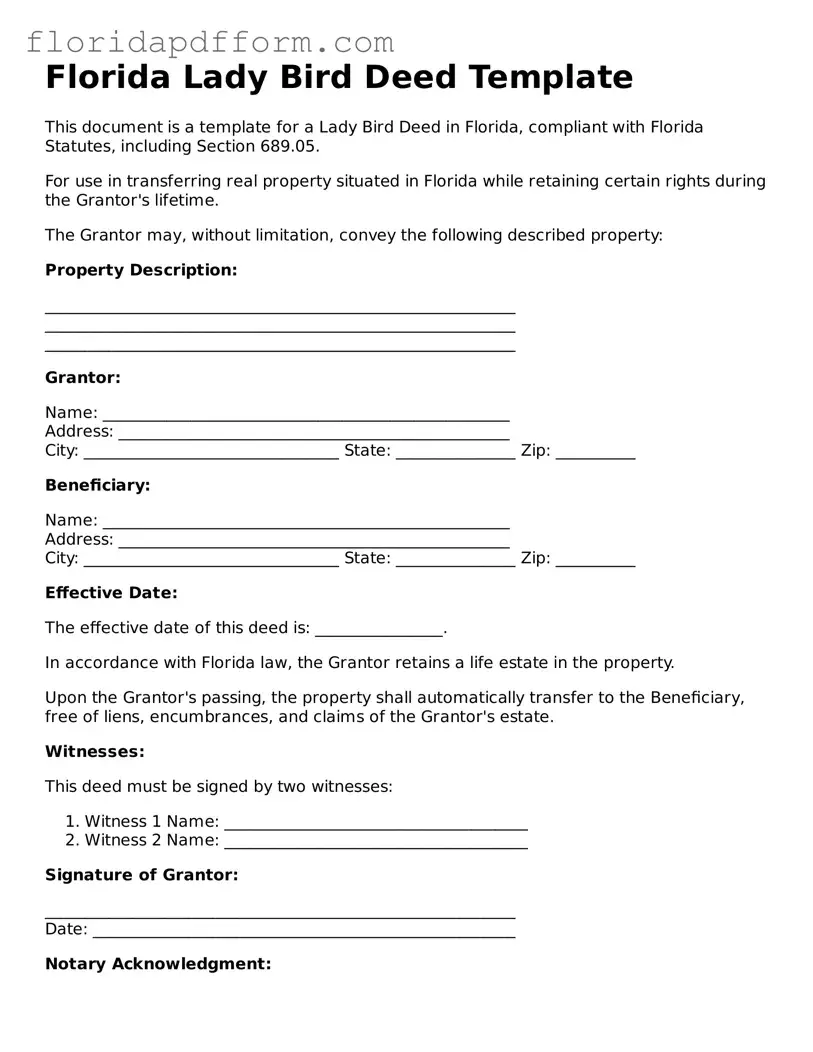How to Use Florida Lady Bird Deed
Filling out the Florida Lady Bird Deed form requires careful attention to detail. After completing the form, you will need to sign it in front of a notary public and then record it with the appropriate county clerk's office. This process ensures that your intentions regarding property transfer are legally recognized and enforceable.
- Begin by obtaining the Florida Lady Bird Deed form. You can find it online or through legal stationery stores.
- Fill in the names of the current property owners at the top of the form. This should include the full legal names as they appear on the property deed.
- Next, provide the address of the property being transferred. Ensure that the address is complete and accurate.
- Identify the beneficiaries who will receive the property upon your passing. Write their full names and relationship to you.
- Indicate whether the property will be transferred to multiple beneficiaries. If so, specify how the property will be divided among them.
- Review the form for any errors or omissions. It is crucial that all information is correct to avoid complications later.
- Sign the form in the designated area. This signature must be done in front of a notary public to validate the document.
- After notarization, take the completed form to the county clerk’s office where the property is located. There, you will need to record the deed.
Once the form is recorded, it becomes part of the public record. This means that your wishes regarding the property transfer are now legally binding. It is advisable to keep a copy of the recorded deed for your personal records.
